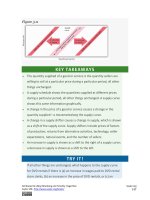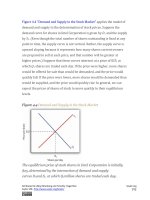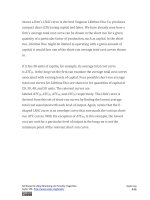Authors libby rittenberg 199
Bạn đang xem bản rút gọn của tài liệu. Xem và tải ngay bản đầy đủ của tài liệu tại đây (554.44 KB, 1 trang )
2. Discuss the reasons why governments sometimes choose to control
prices and the consequences of price control policies.
So far in this chapter and in the previous chapter, we have learned that
markets tend to move toward their equilibrium prices and quantities.
Surpluses and shortages of goods are short-lived as prices adjust to equate
quantity demanded with quantity supplied.
In some markets, however, governments have been called on by groups of
citizens to intervene to keep prices of certain items higher or lower than
what would result from the market finding its own equilibrium price. In
this section we will examine agricultural markets and apartment rental
markets—two markets that have often been subject to price controls.
Through these examples, we will identify the effects of controlling prices.
In each case, we will look at reasons why governments have chosen to
control prices in these markets and the consequences of these policies.
Agricultural Price Floors
Governments often seek to assist farmers by setting price floors in
agricultural markets. A minimum allowable price set above the
equilibrium price is a price floor. With a price floor, the government
forbids a price below the minimum. (Notice that, if the price floor were for
whatever reason set below the equilibrium price, it would be irrelevant to
the determination of the price in the market since nothing would prohibit
the price from rising to equilibrium.) A price floor that is set above the
equilibrium price creates a surplus.
Figure 4.8 "Price Floors in Wheat Markets" shows the market for wheat.
Suppose the government sets the price of wheat at PF. Notice that PF is
Attributed to Libby Rittenberg and Timothy Tregarthen
Saylor URL: />
Saylor.org
199









